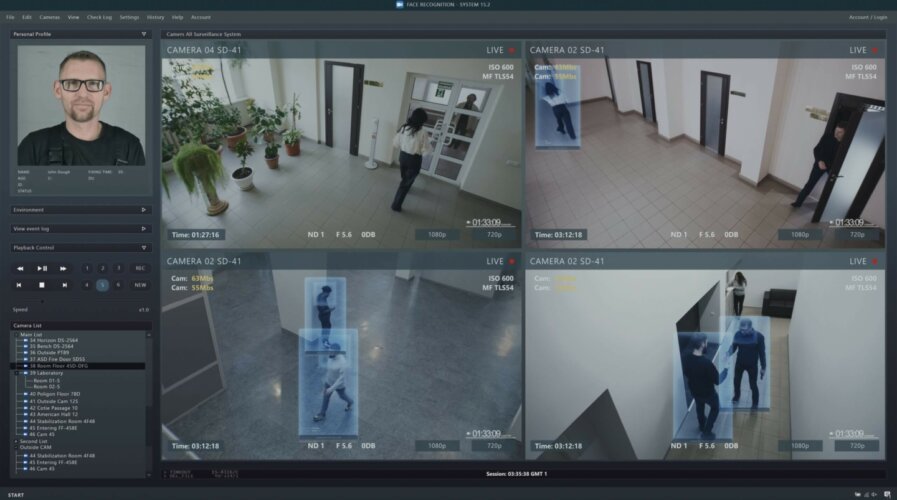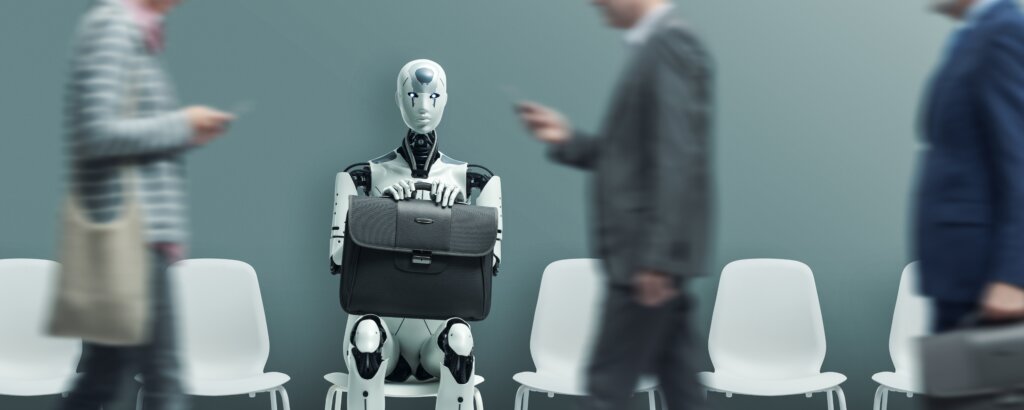
Humans vs. AI in law enforcement. (Source – Shutterstock)
How good are the memories of humans vs. AI in law enforcement?
- UK’s super-recognizers and Japan’s AI technologies provide contrasting yet effective solutions for modern law enforcement challenges.
- Human skills and AI capabilities in law enforcement are not mutually exclusive, but offer unique strengths and weaknesses.
- The way of the future is as yet unclear, but is likely a combination of both approaches.
In our rapidly evolving world, the debate of humans vs. AI—particularly facial recognition technologies—is at the forefront of discussions on the future of law enforcement. While AI tools are frequently touted as the next big thing destined to revolutionize policing, a counter-narrative favoring the unique abilities of humans has been steadily gathering momentum, especially in the United Kingdom.
According to an AFP report published by The Star, the British police force is increasingly advocating for a nuanced, balanced approach that leverages both machine algorithms’ advanced capabilities and the unique, irreplaceable skillsets of human experts, notably the so-called “super-recognizers.”
Super-recognizers are an intriguing subset of society, comprising roughly just one percent of the population, with an extraordinary ability to remember and identify faces. It’s an innate talent that transcends mere memory; it’s about connecting the dots in complex, often chaotic, environments.
Unlike their machine counterparts, these individuals are not confined to analyzing security footage in dimly lit rooms. They actively contribute to various facets of police work, be it crowd control, surveillance, or even targeted operations aimed at preventing sexual assault and other forms of violence.
Humans vs. AI in law enforcement: The machine’s growing role
This juxtaposition between machine capabilities and human skills brings up a compelling question: how do these human faculties measure up against the algorithmic precision and data-processing capabilities of AI in the complex arena of law enforcement? The answer may lie in understanding that this is not a zero-sum game but a partnership built on complementing each other’s inherent strengths and weaknesses.
For instance, one of the most remarkable achievements of human super-recognizers came to the forefront during the London riots of 2011. Triggered by the police shooting of a black man, the riots created a volatile environment, churning out around 200,000 hours of CCTV footage. According to data scrutinized by Professor Josh Davis, just twenty super-recognizers could identify a staggering 600 rioters from this mountain of data.
More astonishingly, one officer, with a specialized focus on gang activity, was able to recognize 180 individuals, some of whom he had never personally met, and some whose faces were only partially visible.
On the front lines: Case studies of humans vs. AI in action
Beyond their application in dealing with large-scale civil unrest, super-recognizers have also been effectively deployed in more focused, specialized law enforcement operations. The Thames Valley Police, for example, have employed these individuals in strategically planned missions to combat sexual assault around bars and nightclubs.
The results have been nothing short of extraordinary. Over three years, these specialized officers have identified and facilitated interventions against 520 individuals, nearly two-fifths of whom had a criminal history involving sexual violence.
Experts like Mike Neville, who specialize in human recognition and identification, point out that AI and super-recognizers serve complementary roles. While incredibly efficient at scanning and analyzing high-quality, straightforward images at high speed, AI technologies falter when dealing with suboptimal conditions, such as low lighting or obscured facial features.
On the other hand, it is precisely under these challenging conditions that human super-recognizers tend to excel. Furthermore, existing UK and EU laws require that AI-generated identifications must be validated by human experts before proceeding with any legal actions, thus reinforcing the harmonious coexistence of humans and machines in this sphere.

Case studies of humans vs. AI in action. (Source – Shutterstock)
This collaborative model also extends to the realms of economics and ethics. AI technologies, while promising, entail hefty initial investments, not to mention ongoing costs related to upgrades, maintenance, and training. Super-recognizers offer a more budget-friendly alternative. Their skills, which require no additional technological infrastructure, can be especially appealing for law enforcement agencies grappling with financial constraints.
Moreover, the deployment of AI technologies in policing raises complex ethical issues, including but not limited to data privacy concerns, potential algorithmic biases, and broader questions about civil liberties. Human-centric approaches, such as the use of super-recognizers, can sidestep many of these ethical landmines, offering what many consider to be a more morally sound alternative.
Lastly, it’s essential to consider the public’s perspective in this conversation. Generally, people tend to trust human intuition over algorithmic determinations, especially in matters as critical and sensitive as law enforcement. This general disposition could significantly influence public acceptance of these technologies, underlining the importance of incorporating human judgment into these systems.
Japan’s technological leap: AI security cameras and public safety
While the United Kingdom explores a balanced approach, combining human skills and machine algorithms, Japan is also navigating its technological strategies in law enforcement. In a poignant timing, as Japan commemorates the recent assassination of former Prime Minister Shinzo Abe, the National Police Agency is preparing to field-test AI-equipped security cameras within the fiscal year ending in March 2024.
Nikkei Asia reported that these next-generation cameras are designed with advanced functionalities such as behavior detection, which can analyze a person’s movements to identify unusual or suspicious activity. The technology is trained to recognize specific behavioral patterns, making detecting potential threats in large crowds possible—challenges that even well-trained human eyes might find daunting.

Japan use of AI security cameras for public safety. (Source – Shutterstock)
Japan’s National Police Agency aims to evaluate these AI systems’ real-world accuracy while carefully considering privacy implications.
This initiative comes in the wake of increasing attacks by ‘lone offenders,’ who launch unexpected attacks without any prior indication. Given this trend, AI technologies offer new hope in pre-empting such incidents, yet ethical concerns remain.
International perspectives also weigh into this ongoing narrative. A 2019 Carnegie Endowment for International Peace survey indicated that AI technologies were being used for policing in 52 out of 176 countries. Moreover, expert insights, such as those from Isao Itabashi, suggest that these technologies are already prevalent in Europe, the US, and Asia, offering police forces a broader set of tools for maintaining public safety.
As law enforcement agencies worldwide grapple with these complexities, it becomes increasingly clear that there isn’t a one-size-fits-all approach. Whether it’s the UK’s super-recognizers or Japan’s advancements in AI, a blend of human expertise and technological capabilities appears to be the most promising way forward.
READ MORE
- Safer Automation: How Sophic and Firmus Succeeded in Malaysia with MDEC’s Support
- Privilege granted, not gained: Intelligent authorization for enhanced infrastructure productivity
- Low-Code produces the Proof-of-Possibilities
- New Wearables Enable Staff to Work Faster and Safer
- Experts weigh in on Oracle’s departure from adland






